
In this posting I want to talk a bit about the AD/DA converters in my studio. On the left you see again a stripped down version of the studio schematic. You see the analog synthesizers on the left and the analog audio signals coming from them in red going into the AD/DA convertors en coming out on the right in green as ADAT. There are three types of AD/DA converters in this picture marked 'AD8000', 'DDX3216' and 'Aurora'. I will go more in dept on this equipment further on in this posting. But what do these converters do? Well quite simply they convert analog signals to digital and digital signals to analog. As I stated before they all run on 48 Khz, meaning that 48.000 times a second they measure the voltage of the analog signal and translate that into digital numbers that are transferred in 'ones' and 'zeros'. In my setup I only use AD/DA converters that convert to from and to the 8 channel ADAT protocol. But also this could have been SPDIF for example.

In AD/DA converters there is a lot of quality difference. The best converters I have are two Lynx Aurora 16's. They have 16 mono input channels and 16 mono output channels on on the analog side and I inserted two ADAT boards so that is also has 2 ADAT input channels and two ADAT outputs. I use of in my analog corner, because especially analog synthesizer have a very wide dynamic range. These aurora's are able to truly capture the spirit of the analog signal without losing the dynamics. They sound terrible accurate. The other one is connected to some of my favorite synthesizers in my Synth Alley. On both I also use some outputs, but I bought them especially for the inputs. One of the things to keep in mind is that these converters become very warm. They need ventilation on the top, so you cannot put them in the middle of a rack between other equipment. In both racks I have them on top for optimal ventilation. You can find more information on these convertors on the Lynx Studio website at:
http://www.lynxstudio.com/product_detail.asp?i=1
I also use a some Behringer ADA8000 AD/DA converters. These are much cheaper than the Aurora, but also a bit less in quality off course, though they are really not bad at all. They have 8 channels in stead of 16 and there is one ADAT input and one ADAT output on board. They do a good job in my studio. I have two of them in my main rack and they are connected to a Behringer DDX3216.

The DDX3216 is a very compact 32 channel digital mixer that I use to connect all the synthesizer modules in my rack to. It has 16 analog input, so in this way it acts as a AD converter on itself as well. I also inserted two double ADAT interfaces, so also it has 4 ADAT inputs and 4 ADAT outputs as well. The routing in this mixer is very flexible so actually I use it only as sort of a digital patch panel and AD converter. I can easily say which channel is going to which bus and the buses are routed to the ADAT outputs. Off course it is easy to set the input level on the mixer, but actual mixing is done in my Audio PC. This mixer sounds very transparent and that is what I want from it. I don't like coloring of my audio signals. The DDX3215 has some build in effects as well, but I use none of these, because I think they are not so good.

I placed all the AD/DA converters as close to the analog synthesizers as I possibly could. In this way I can use also the shortest possible analog copper wires. The advantage off course is less noise and hum, but also less cable spaghetti :) From the AD/DA converters to the rest of the digital equipment the signals are transported with ADAT over fiber. This saved me a lot of cabling in my current setup as well. I have a patch panel connected as well to every AD/DA converter so I can easily patch equipment to them. And off course everything is neatly labeled so I always know what is what. I'm very happy that I invested in this setup since it saved be about three weeks building up my studio again I guess and besides the overall quality of the sound has improved dramatically. But also within a year I hope to move everything again to an even newer studio :) Curious? Keep track of my blog. I will tell more about that soon.
 In this posting I want to talk a bit about the AD/DA converters in my studio. On the left you see again a stripped down version of the studio schematic. You see the analog synthesizers on the left and the analog audio signals coming from them in red going into the AD/DA convertors en coming out on the right in green as ADAT. There are three types of AD/DA converters in this picture marked 'AD8000', 'DDX3216' and 'Aurora'. I will go more in dept on this equipment further on in this posting. But what do these converters do? Well quite simply they convert analog signals to digital and digital signals to analog. As I stated before they all run on 48 Khz, meaning that 48.000 times a second they measure the voltage of the analog signal and translate that into digital numbers that are transferred in 'ones' and 'zeros'. In my setup I only use AD/DA converters that convert to from and to the 8 channel ADAT protocol. But also this could have been SPDIF for example.
In this posting I want to talk a bit about the AD/DA converters in my studio. On the left you see again a stripped down version of the studio schematic. You see the analog synthesizers on the left and the analog audio signals coming from them in red going into the AD/DA convertors en coming out on the right in green as ADAT. There are three types of AD/DA converters in this picture marked 'AD8000', 'DDX3216' and 'Aurora'. I will go more in dept on this equipment further on in this posting. But what do these converters do? Well quite simply they convert analog signals to digital and digital signals to analog. As I stated before they all run on 48 Khz, meaning that 48.000 times a second they measure the voltage of the analog signal and translate that into digital numbers that are transferred in 'ones' and 'zeros'. In my setup I only use AD/DA converters that convert to from and to the 8 channel ADAT protocol. But also this could have been SPDIF for example. In AD/DA converters there is a lot of quality difference. The best converters I have are two Lynx Aurora 16's. They have 16 mono input channels and 16 mono output channels on on the analog side and I inserted two ADAT boards so that is also has 2 ADAT input channels and two ADAT outputs. I use of in my analog corner, because especially analog synthesizer have a very wide dynamic range. These aurora's are able to truly capture the spirit of the analog signal without losing the dynamics. They sound terrible accurate. The other one is connected to some of my favorite synthesizers in my Synth Alley. On both I also use some outputs, but I bought them especially for the inputs. One of the things to keep in mind is that these converters become very warm. They need ventilation on the top, so you cannot put them in the middle of a rack between other equipment. In both racks I have them on top for optimal ventilation. You can find more information on these convertors on the Lynx Studio website at: http://www.lynxstudio.com/product_detail.asp?i=1
In AD/DA converters there is a lot of quality difference. The best converters I have are two Lynx Aurora 16's. They have 16 mono input channels and 16 mono output channels on on the analog side and I inserted two ADAT boards so that is also has 2 ADAT input channels and two ADAT outputs. I use of in my analog corner, because especially analog synthesizer have a very wide dynamic range. These aurora's are able to truly capture the spirit of the analog signal without losing the dynamics. They sound terrible accurate. The other one is connected to some of my favorite synthesizers in my Synth Alley. On both I also use some outputs, but I bought them especially for the inputs. One of the things to keep in mind is that these converters become very warm. They need ventilation on the top, so you cannot put them in the middle of a rack between other equipment. In both racks I have them on top for optimal ventilation. You can find more information on these convertors on the Lynx Studio website at: http://www.lynxstudio.com/product_detail.asp?i=1 I also use a some Behringer ADA8000 AD/DA converters. These are much cheaper than the Aurora, but also a bit less in quality off course, though they are really not bad at all. They have 8 channels in stead of 16 and there is one ADAT input and one ADAT output on board. They do a good job in my studio. I have two of them in my main rack and they are connected to a Behringer DDX3216.
I also use a some Behringer ADA8000 AD/DA converters. These are much cheaper than the Aurora, but also a bit less in quality off course, though they are really not bad at all. They have 8 channels in stead of 16 and there is one ADAT input and one ADAT output on board. They do a good job in my studio. I have two of them in my main rack and they are connected to a Behringer DDX3216. The DDX3216 is a very compact 32 channel digital mixer that I use to connect all the synthesizer modules in my rack to. It has 16 analog input, so in this way it acts as a AD converter on itself as well. I also inserted two double ADAT interfaces, so also it has 4 ADAT inputs and 4 ADAT outputs as well. The routing in this mixer is very flexible so actually I use it only as sort of a digital patch panel and AD converter. I can easily say which channel is going to which bus and the buses are routed to the ADAT outputs. Off course it is easy to set the input level on the mixer, but actual mixing is done in my Audio PC. This mixer sounds very transparent and that is what I want from it. I don't like coloring of my audio signals. The DDX3215 has some build in effects as well, but I use none of these, because I think they are not so good.
The DDX3216 is a very compact 32 channel digital mixer that I use to connect all the synthesizer modules in my rack to. It has 16 analog input, so in this way it acts as a AD converter on itself as well. I also inserted two double ADAT interfaces, so also it has 4 ADAT inputs and 4 ADAT outputs as well. The routing in this mixer is very flexible so actually I use it only as sort of a digital patch panel and AD converter. I can easily say which channel is going to which bus and the buses are routed to the ADAT outputs. Off course it is easy to set the input level on the mixer, but actual mixing is done in my Audio PC. This mixer sounds very transparent and that is what I want from it. I don't like coloring of my audio signals. The DDX3215 has some build in effects as well, but I use none of these, because I think they are not so good. I placed all the AD/DA converters as close to the analog synthesizers as I possibly could. In this way I can use also the shortest possible analog copper wires. The advantage off course is less noise and hum, but also less cable spaghetti :) From the AD/DA converters to the rest of the digital equipment the signals are transported with ADAT over fiber. This saved me a lot of cabling in my current setup as well. I have a patch panel connected as well to every AD/DA converter so I can easily patch equipment to them. And off course everything is neatly labeled so I always know what is what. I'm very happy that I invested in this setup since it saved be about three weeks building up my studio again I guess and besides the overall quality of the sound has improved dramatically. But also within a year I hope to move everything again to an even newer studio :) Curious? Keep track of my blog. I will tell more about that soon.
I placed all the AD/DA converters as close to the analog synthesizers as I possibly could. In this way I can use also the shortest possible analog copper wires. The advantage off course is less noise and hum, but also less cable spaghetti :) From the AD/DA converters to the rest of the digital equipment the signals are transported with ADAT over fiber. This saved me a lot of cabling in my current setup as well. I have a patch panel connected as well to every AD/DA converter so I can easily patch equipment to them. And off course everything is neatly labeled so I always know what is what. I'm very happy that I invested in this setup since it saved be about three weeks building up my studio again I guess and besides the overall quality of the sound has improved dramatically. But also within a year I hope to move everything again to an even newer studio :) Curious? Keep track of my blog. I will tell more about that soon.



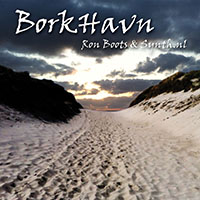
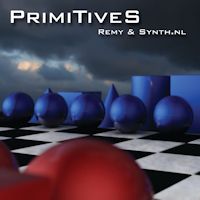
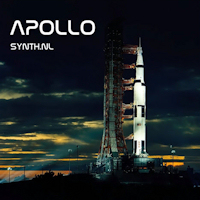
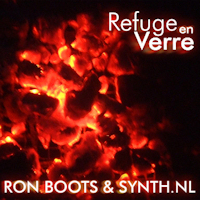
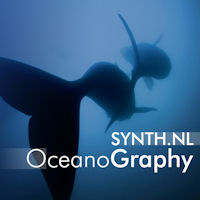
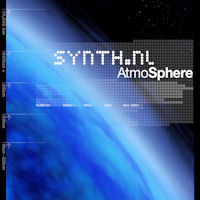
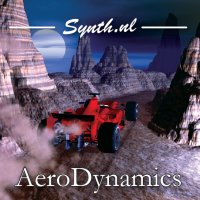
No comments:
Post a Comment